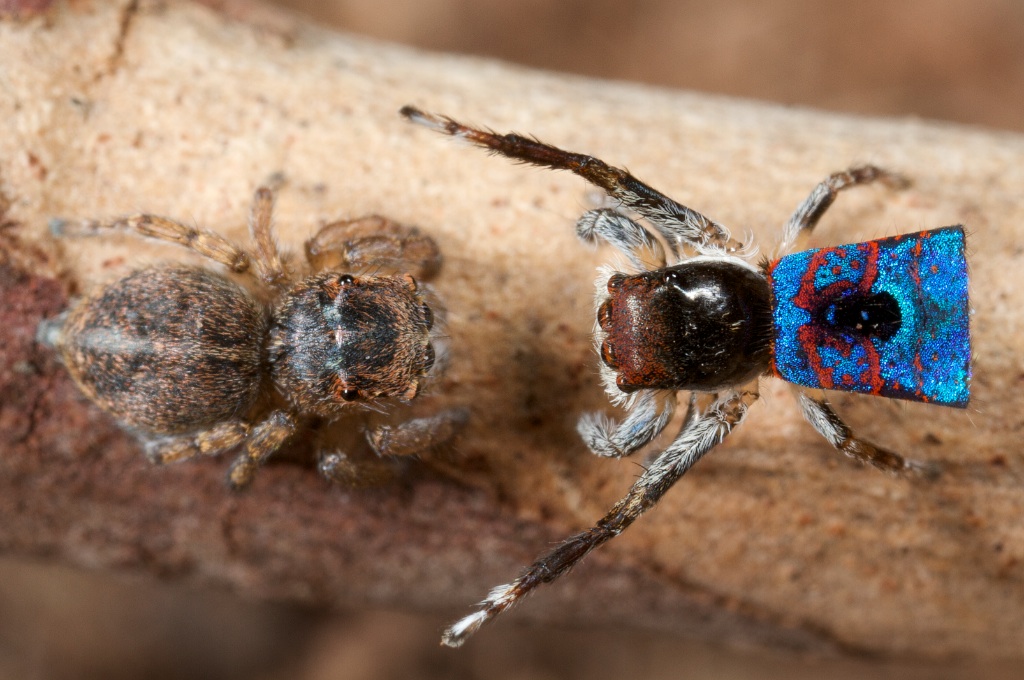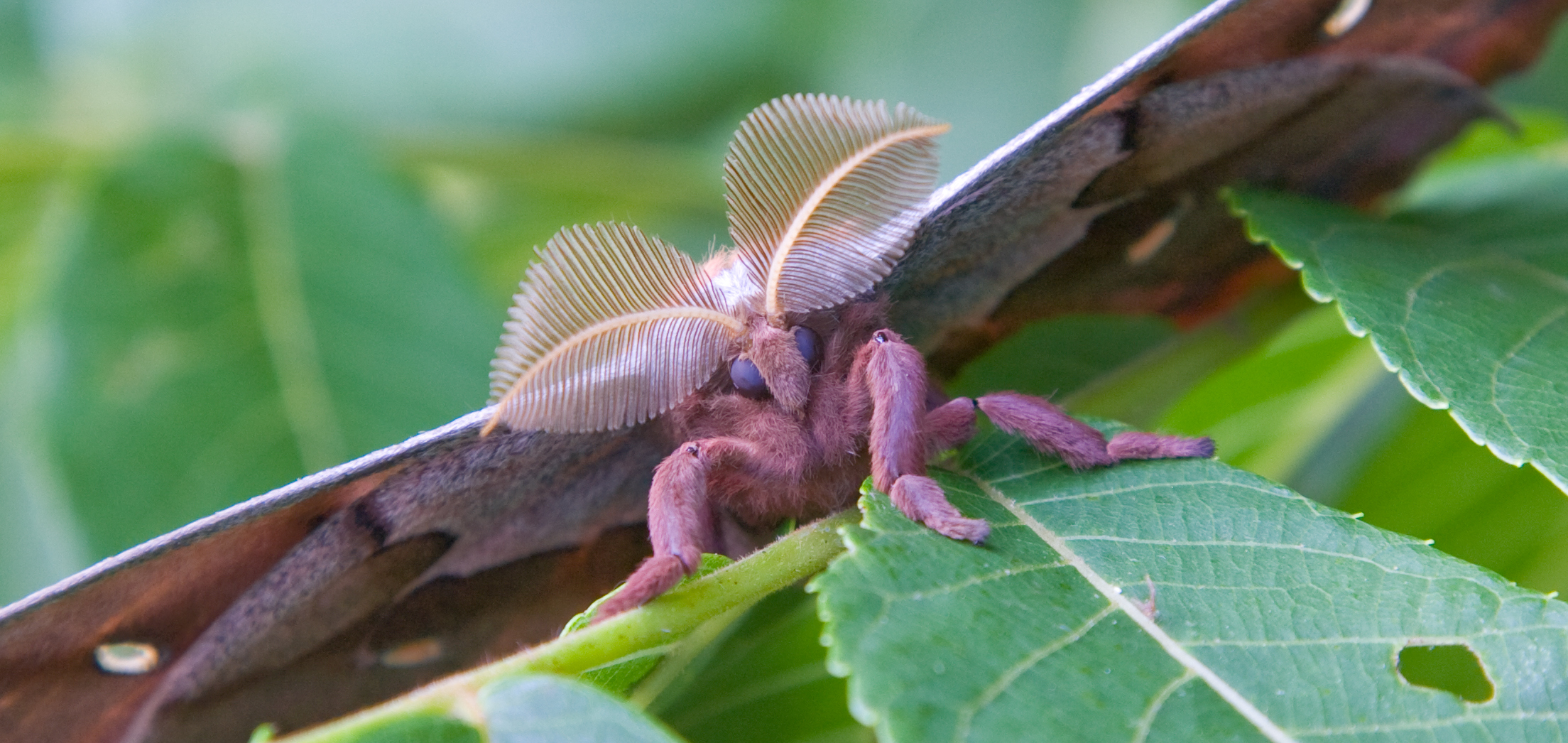
Sciences & Technology
Darwin was right: Females prefer sex with good listeners

The evolutionary biology behind insect sex can tell us a lot about ourselves - but for both them and us, genes aren’t necessarily destiny
Published 9 November 2017
As an evolutionary biologist focusing on animal behaviour, I’m sometimes asked what relevance our research has for human behaviour. Years ago, I would duck the question because it was such a passionately polarising, political and social issue, and respond lamely that I thought probably none.
But now, it seems entirely necessary to highlight those insights from studies of animal behaviour that tell us what we aren’t.

The strength of feeling against evolutionary thinking in the past was typified by a protester infamously pouring a jug of water over the head of eminent biologist and Pultizer prize winner E. O. Wilson, at the 1978 meeting of the American Association for the Advancement of Science in Washington.
Professor Wilson was accused of encouraging racism and misogyny after suggesting, in the final chapter of his book Sociobiology, that investigations of humanity would benefit from an evolutionary biology perspective. The book re-ignited the sterile nature/nurture debate, and attracted fierce criticism, famously including from colleagues at Harvard.
This kind of response seems to have subsided now with wider acceptance of genetic influences on human behaviour, and ‘evolutionary’ explanations for some behaviours are now commonplace in the broader community.
And none more so than in the field of sex and mating, and of the differences between males and females.

Sciences & Technology
Darwin was right: Females prefer sex with good listeners
Arguably, Darwin’s most original idea is his theory of sexual selection, which takes account of the remarkably extravagant secondary sexual characteristics. These are physical attributes of adults that are typically found in one sex only, are not directly involved in reproduction, and include things like colourful plumage, impressive weaponry, and elaborate sensory organs.
Sexual selection not only accounts for why males and females look different, but also why they can have different reproductive strategies – females maximise their reproductive success, the currency of selection, by judicious choice of partner and nurturing the resulting offspring, while males maximise their success by playing the field.
If only it were that simple.
And in fact, it really isn’t that simple – as best illustrated by the 40-odd year obsession with sexual selection that has dominated research into animal behaviour.
This perspective of promiscuous males and coy females has misinformed numerous popular accounts of human behaviour. Perhaps most insidious is the justification for the now-dated saying “boys will be boys” - it’s in their genes to dominate, play the field or dodge caring for the children.
Underlying this view is the so-called Bateman’s Principle, which is based on English geneticist Angus Bateman’s experiments with Drosphila flies, whose behaviour most surely is governed by their genes. Essentially, these experiments suggested that male, but not female reproductive success increases with mating frequency. The principle is often coupled with the claim that males can be promiscuous because sperm is cheap, while females are choosy because eggs are expensive.

Angus Bateman’s experiments, conducted in 1948, have now been found wanting. The original analyses were flawed, and the experiments themselves couldn’t be replicated. But, oddly, that hasn’t dimmed enthusiasm for Bateman’s Principle
Nevertheless, it’s increasingly clear that males do not necessarily maximise their reproductive success by playing the field. For example, some male spiders, who face an uncertain life after mating, are best served by monogamy. Male crickets, who make a substantial material investment in their mate’s egg production, can become coy and choosy if food is scarce.
But more importantly, a promiscuous male mating strategy is not so genetically hard-wired. Indeed, insects are providing a rich seam of examples of flexible male mating strategies.
Many insects lead two very different lives, best illustrated in the kid’s book The Very Hungry Caterpillar: the larvae eat voraciously and grow, eventually turning into a pupa, and then metamorphose into a very different looking adult whose primary purpose is to find a mate and lay eggs.

Arts & Culture
The myth of Testosterone Rex
The challenge of finding a mate, for both males and females, rests on the local population density, which for some insects can be fairly predictable from generation to generation, but for other species it can vary widely.
Males in dense populations might be best served by investing in mating activities. Larger testes, for example, will help deliver larger ejaculates of sperm, which will outnumber those delivered by rival males in the likely event the female mates again.
But males in sparse populations might be better served by investing in mate searching activities. Larger antennae will allow the male to be among the first to detect sex-pheromones, odours released by potential mates, and larger wings may allow him to reach her more quickly.
Once a larva has pupated, there are finite resources that can be used to develop the different parts of the adult body, and so males cannot hedge their bets by having both large testes and large antennae and wings. Instead, they must play the futures market, relying on their larval social environment to predict the adult environments.
And, according to our latest research, it seems that this kind of ‘anticipatory flexibility’ in male mating strategies is quite widespread in insects, when one might expect behaviour to be more strongly constrained by their genes.
Males of the gum-leaf skeletonizer moth Uraba lugens have feathery antennae, which they use to detect sex-pheromones released by the very short-lived females. We showed that being a good ‘listener’ is important – males with larger antennae are more likely to detect the sex pheromone of a solitary female, but smaller antennae are fine if there are several females releasing pheromones.
It turns out that this effect informs the developmental processes leading to their adult characteristics.

Remarkably, when larvae are reared in containers with many other larvae, the males have much larger antennae and much smaller testes than when they are raised in containers with only a few other larvae. The males apparently use larval population density as a way of anticipating adult population density, and adjust their investment in antennae and testes accordingly.
Humans are not insects, and we are unusual in the degree to which our behaviour is influenced by our cultural environment. It simply doesn’t make sense to claim that for humans, unlike insects, genetic influences are so pervasive that we cannot modify our behaviour.
It is far more likely that “boys will be boys” because they are encouraged to be so, not because they are enslaved by their genes.
Banner image: Jurgen Otto/Flickr